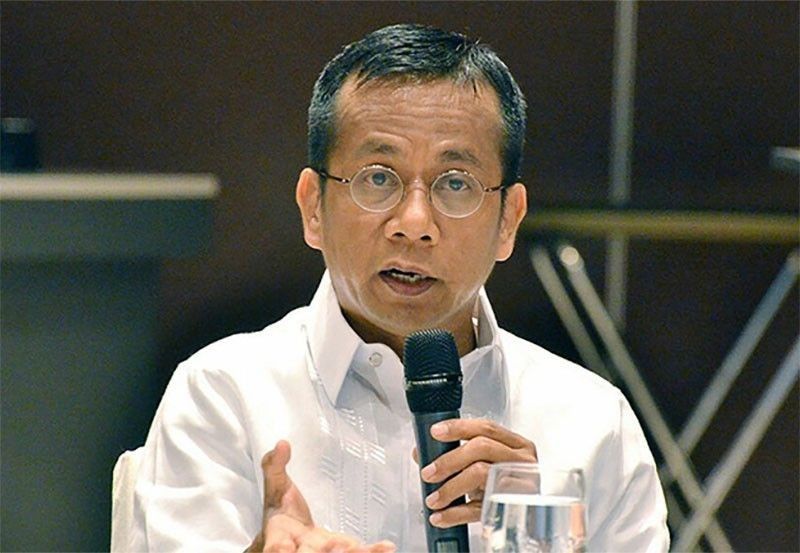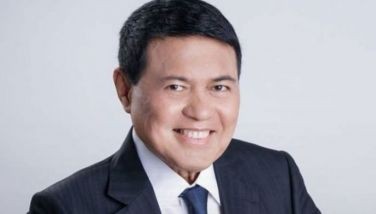NEDA optimistic on upper middle-income status by 2025

MANILA, Philippines — The National Economic and Development Authority (NEDA) remains optimistic that the country can reach upper middle-income status by late next year despite a revised growth target for 2024.
NEDA Secretary Arsenio Balisacan told reporters on the sidelines of the BusinessWorld Economic Forum that the agency is still hopeful the Philippines could achieve upper middle-income status toward the latter part of next year, even as the 2024 growth outlook is a bit more tempered than what was initially expected.
“If growth will not be dampened this year, we should be on track,” he said.
The Philippines, which is classified by the World Bank as a lower middle-income country, with a gross national income (GNI) per capita of $3,950, is aiming to attain upper middle-income status by next year.
To be considered an upper middle-income country, the GNI per capita income should be within the range of $4,466 to $13,845.
The Philippine government is targeting to achieve a six to seven percent economic growth for this year, revised downward from a previous goal of 6.5 to 7.5 percent.
As the Philippines grew by 5.7 percent in the first quarter, Balisacan said the economy has to post a 6.1-percent growth in the remaining three quarters of the year to attain this year’s gross domestic product (GDP) growth target.
He said the NEDA believes the economic growth target for this year could be achieved as inflation is seen to be manageable, with the better than expected inflation print in April.
Headline inflation or the rate of increase in average prices of consumer goods and services quickened to 3.8 percent in April from 3.7 percent in March.
Average inflation from January to April stood at 3.4 percent, within the government’s two to four percent target.
“We hope that will continue. And since El Niño is tapering, we expect that the world prices for commodities, including rice, are expected to moderate and start falling,” Balisacan said.
Food remains to be the main driver of inflation in the country.
While rice inflation eased in April, it remained elevated at 23.9 percent from the previous month’s 24.4 percent.
As the Bangko Sentral ng Pilipinas has signaled that it may start loosening monetary policy, Balisacan also said this may improve expectations and help fuel consumption, a key driver of the country’s economic growth.
To ensure that economic growth is inclusive, Balisacan emphasized the need for the country to diversify its sources of growth.
“On the demand?side, it is apparent that our growth has been mainly domestic consumption-driven, with other expenditure components, particularly investments and?exports (external demand), contributing to less than half of GDP growth,” he said.
As for the supply side, he said increasing productivity and enhancing the agriculture?sector’s competitiveness remain critical, given its linkages to other industries.
He said manufacturing is also seen as necessary to achieving a sustained and inclusive economic growth as the sector provides stable and well-paying jobs for both skilled and semi-skilled workers.
The country’s chief socioeconomic planner also said inclusive growth from a geographic dimension remains a challenge.
“Much of our economic growth over the decades is traceable to the NCR (National Capital Region) and its neighboring regions. Specifically, NCR contributes around one-fourth, while NCR with Central Luzon to its north and Calabarzon to its south collectively constitute more than half of GDP growth,” Balisacan said.
As part of the push to diversify growth sources, he said the government is working to strengthen the country’s investment ecosystem, promote partnerships between the public and private sectors particularly in physical and social infrastructure, as well as improve the ease of doing business.
He said the government also continues to push for reforms to promote the development of production sectors through legislative priorities such as the Konektadong Pinoy Bill, Enterprise-based Education, the Training Framework Act, the Department of Water Resources Bill, the amendments to the Government Procurement Reform Act as well as various tax administration and fiscal reforms.
“So, what are the growth drivers? We are pushing on all fronts. Opportunities across the entire economy abound: in enabling public infrastructure such as energy, water, and?physical and digital connectivity, as well as social infrastructure such as schools, healthcare facilities and housing. We are working hard to create an environment where investments and jobs can thrive in agribusiness, mining, manufacturing, construction, shipbuilding, tourism, education, health, IT-BPM (information technology - business process management) and creatives,” Balisacan said.
- Latest
- Trending
































